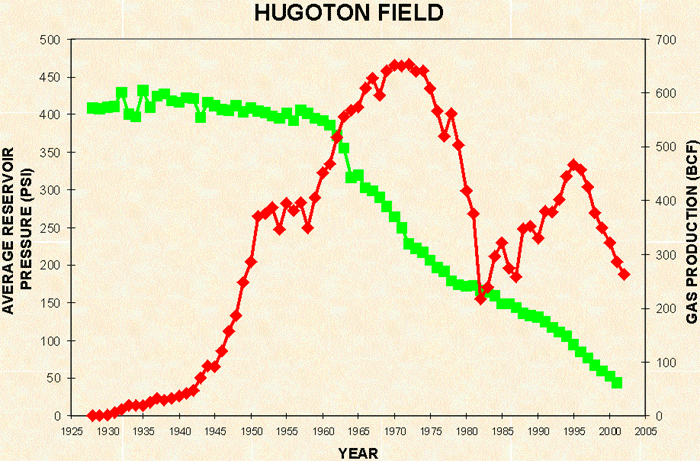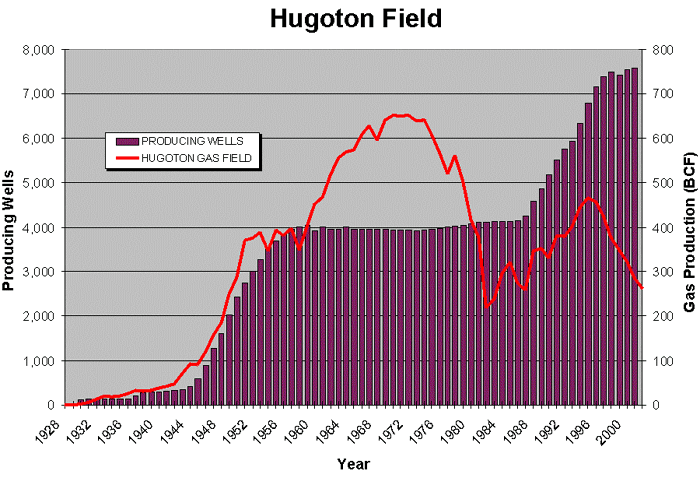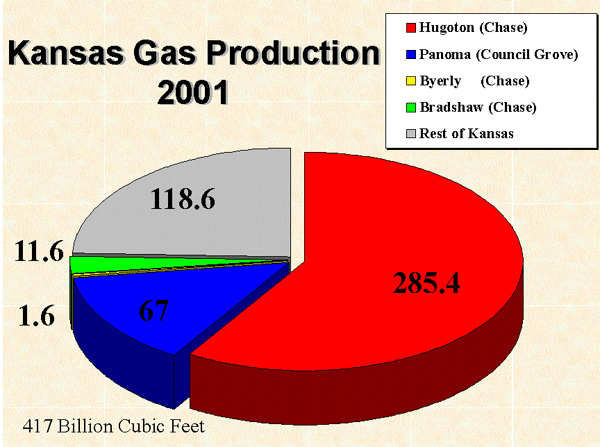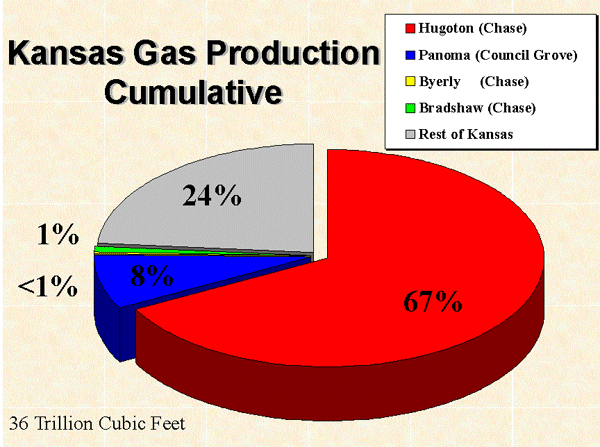 |
|
Kansas Geological Survey Open-file Report 2003-29 |
History
Gas in the Hugoton embayment was discovered in 1922 in Seward County, three miles west of Liberal, Kansas. Because this well did not produce oil, it was considered to have little value and remained unused for several years. In 1927, gas was discovered at the Independent Oil and Gas Company's Crawford No. 1, about 2,600 feet (790 meters) below the surface southwest of Hugoton, Kansas, in Stevens County (Furbush, 1959). This is now considered the center of the Hugoton producing area. By the end of 1928, five wells had been drilled in the field and the first pipeline was transporting gas to local markets. In 1929, Argus Pipe Line Company started construction of a pipeline to furnish gas to Dodge City, Kansas (Hinton, 1952). Construction of major pipelines in the 1930's encouraged further drilling in the area. Today, approximately 11,000 wells produce gas and oil in the Kansas portion of the Hugoton area, and thousands of miles of pipeline carry Hugoton gas to many parts of the U.S. Approximately 7,800 wells produce gas from the Chase Group in the Hugoton Field.
In the interest of conservation, efficiency, and fairness, Kansas oil and gas production has been regulated since the 1930's. Regulations governing well spacing and rates of production continue to change as new technology and more information become available. For many years, wells were drilled on 640--acre (2.59--square kilometers) spacing units, or approximately one well per square mile. In 1986, the Kansas Corporation Commission (KCC) ruled that the Chase Group rocks in the Hugoton field were not being efficiently drained of gas and that more wells were needed to improve production. At that time, the Commission estimated that an additional 3.5 to 5 trillion cubic feet of gas, or roughly 10 to 15 years of additional production (at 1985 rates), could be recovered from the Chase Group in the Hugoton field. The KCC ruling encouraged drilling and has led to increased gas production. In the 1990's gas placing wells on compression accelerated production.
For years, the reservoirs that produced gas from the giant fields were treated as relatively continuous, or homogeneous. Modern studies now show the rocks contain barriers restricting the flow of gas both vertically and horizontally, the reservoirs to be isolated into individual compartments. Understanding how the reservoir is divided is important for efficient recovery of gas and oil.
The average reservoir pressure in the Hugoton area has declined from over 400 pounds per square inch (psi) to less than 40 psi today. At the current rate of decline pressures will soon approach their economic limit. As reservoir pressures continue to decline, intelligent energy policies and new technologies must be developed to maximize production.




|
|
e-mail : webadmin@kgs.ku.edu
Last updated May 2003
http://www.kgs.ku.edu/PRS/publication/2003/ofr2003-29/P1-03.html